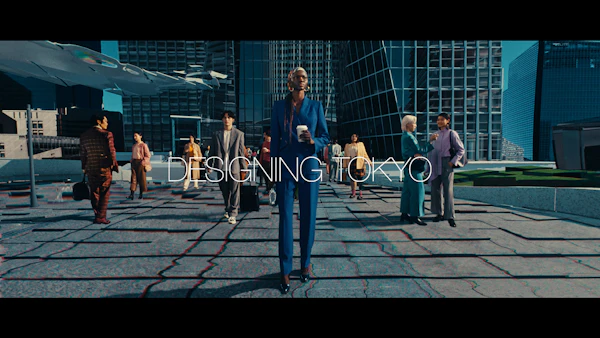Mori Building Selected as CDP Climate Change A List Company for the Second Consecutive Year
Recognized for its utilization of renewable energy sources and collaboration with suppliers to achieve "decarbonization of cities"
Tokyo, February 26, 2025 -- Mori Building Co., Ltd., Japan's leading urban landscape developer, announced today that, for the second consecutive year, it has been selected as a Climate Change A List company by the CDP, a London-based international non-profit organization that assesses and certifies the environmental policies and initiatives of companies and other organizations. This certification recognizes us as a leader in terms of the environmentally-friendly initiatives we have implemented at a global level aiming to help ensure an Earth Positive future. These include the transparency of our environmental initiatives, the introduction of our new renewable energy sources, and our collaboration with suppliers.

Mori Building's approach to "decarbonizing cities"
Mori Building's basic environmental philosophy is to help achieve a sustainable future through urban development and management based on our ideal of the Vertical Garden City. This vision promotes the harmonious coexistence of cities and nature, decarbonized cities, and resource recycling.
In addressing climate change through the decarbonization of cities, Mori Building advocates for compact cities that integrate diverse urban functions within a walkable area, an approach that achieves greater efficiency than conventional urban models. By actively adopting high-efficiency systems and managing entire districts comprehensively, Mori Building maximizes energy-saving efforts across its developments. In addition, the company is committed to expanding its use of renewable energy.
Evaluation of "Value Chain Engagement" and "Energy" increased from the previous year
This year, the CDP's ratings for Mori Building in the "Value Chain Engagement" and "Energy" categories increased compared to the previous year. In the former category, Mori Building has set medium- to long-term targets for reducing greenhouse gas emissions, including a 50% reduction in Scope 1 and 2 emissions and a 30% reduction in Scope 3 emissions (both compared to FY2019) by FY2030, and a net zero emissions target for FY2050. In addition, in order to calculate the majority of Scope 3 emissions, which are categorized as Category 1 (products and services) and Category 2 (capital goods), we have introduced a total emissions allocation method that uses primary data unit values from each of our suppliers. We also quantify our use of materials using a tool that utilizes the "LCA Guidelines for Buildings" compiled by the Architectural Institute of Japan to calculate emissions from newly completed properties, thereby achieving a calculation of GHG emissions that reflects reduction efforts throughout our entire supply chains.
With regard to energy, Mori Building is working to achieve RE100 certification1 by 2030, and to this end we have been developing farm-type solar power plants. In February 2024, we began supplying electricity to our properties utilizing off-site power purchase agreements (PPAs).2 We will continue to work on developing more self-generated power sources and promoting the procurement of electricity from renewable energy sources.
Cities are a cornerstone of human activity and hold the key to our future. Mori Building, under its philosophy of "Create Cities, Nurture Cities," is committed to the harmonious coexistence of cities and nature through low-carbon, resource-recycling initiatives aimed at realizing a truly sustainable world.
1 An international corporate grouping whose members aim to procure 100% of the electricity they consume from renewable energy.
2 A contract method in which the owner of a renewable energy power source (including developers and investors) and the purchaser of the electricity (consumers, etc.) enter into a contract to buy and sell renewable energy electricity at a price and for a period agreed in advance, and supply renewable energy electricity generated by a renewable energy power source installed off-site (not at the point of demand) to the purchaser of the electricity via the general power grid.


